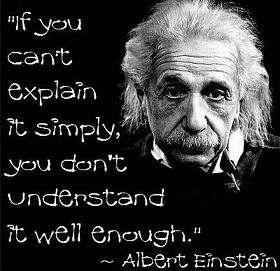The Feynman Technique, developed by Nobel-prize winning physicist Richard Feynman, helps you understand, recall and explain anything using concise thoughts and simple language.
You can use this model to quickly learn new concepts, shore up knowledge gaps, recall ideas you don’t want to forget, or grapple with complex subject matter. To adopt the Feynman Technique, follow these 4 steps:
1) Identify the Topic
Pick something you want to understand and start studying it. Write down everything you know about the topic. Add to that page every time you learn something new.
2) Teach it to a Child
This forces you to make it really simple. When you write out an idea from start to finish in simple language that a child can understand, you force yourself to understand the concept at a deeper level and simplify relationships and connections between ideas.
3) Identify Your Knowledge Gaps
If you cannot find the words to describe your concept in layman terms, revisit problem areas until you can explain the topic fully. Go back to the source material and re-learn it until you can explain it in basic terms. Highlighting knowledge gaps will help you when you collect and organize your notes into a cohesive story (which is the next step.)
4) Simplify and use Analogies
Organize your notes into a simple story that flows. Use analogies and simple sentences to strengthen your understanding. Practice reading your story out loud. Pretend to tell the story to a classroom of students. Get to the hypothesis in as few words as possible. Avoid clunky, verbose language.
For a brief video outlining the Feynman Technique, click here. These concepts can be used anywhere and anytime. Learning is not only about remembering something difficult, but it is about making things easier. By forcing yourself to make something easier, you will remember it better!

